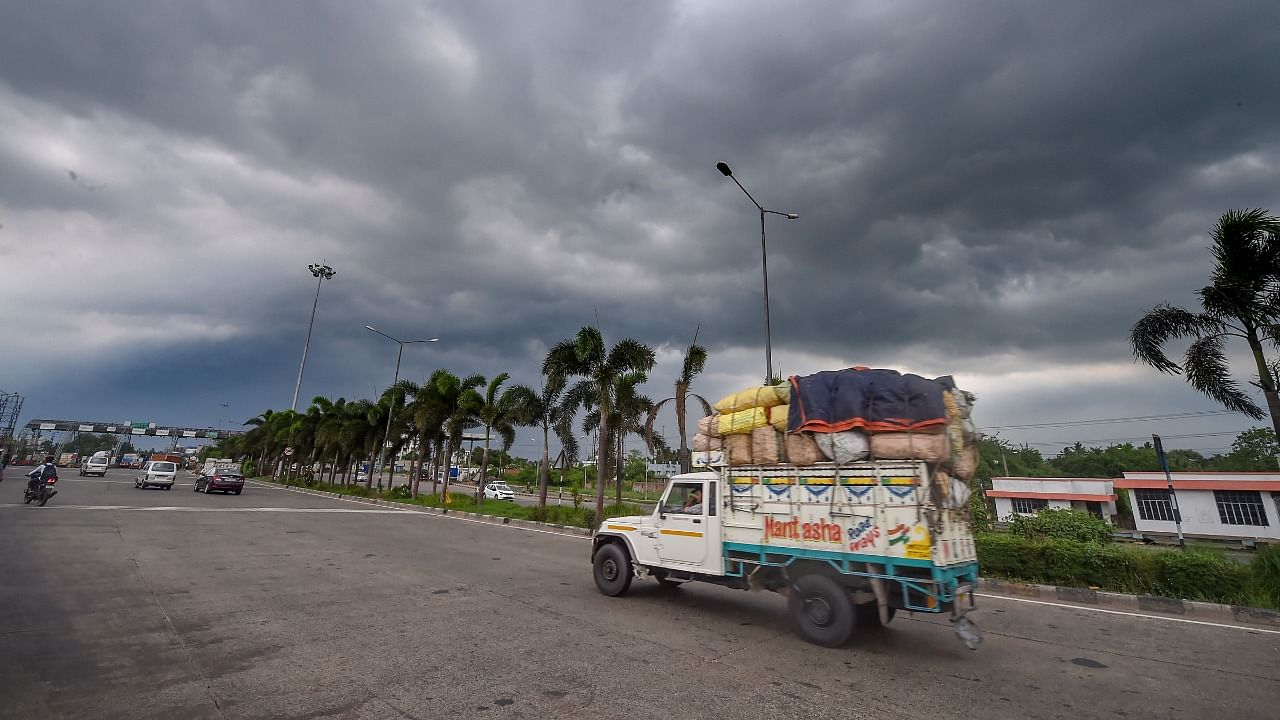
The National Disaster Response Force (NDRF) has directed its rescue teams to ensure that the country's major medical oxygen generation plants based in Odisha and West Bengal are "running and alive" during Cyclone Yaas that is developing in the Bay of Bengal, a senior officer said on Monday.
NDRF director general (DG) S N Pradhan said the force has earmarked a total of 149 teams for undertaking evacuation and rescue operations, of which 99 will be deployed on the ground and the remaining 50 will be available at its various bases across the country for quick airlift, if required.
Pradhan added that all the states expected to face the fury of the 'very severe cyclonic storm' have been asked to "not take any chance" and evacuate each and every person from its likely path well in time.
This advisory has been reiterated specifically in the backdrop of the recent on-sea accident that took place during the onslaught of Cyclone Tauktae on the western coast where over 70 personnel working at a barge off the Mumbai coast have been killed till now.
Cyclone Yaas is very likely to cross north Odisha-West Bengal coasts between Paradip and Sagar Island around May 26 noon. It is expected to bring in winds of 155-165 kilometres per hour, gusting up to 180 kmph.
"Both Odisha and West Bengal are major supplier from the eastern grid to the south, northern and central grid when it comes to medical oxygen (required for the treatment of coronavirus infected patients)."
"For example, all the oxygen from Angul (in Odisha) goes by train and roads towards central, south and parts of north India. Likewise, oxygen produced from Kolkata and Haldia (in West Bengal) goes towards the north, east and north-eastern parts of the country," Pradhan told PTI.
All these have "to be kept running and alive" apart from securing any possible damage to Covid-19 facilities and even quick transport of patients to safer locations, he said.
He gave a recent example where a team of NDRF rescuers "prioritised" clearing a particular road stretch used for oxygen transportation in Goa over other roads that were blocked.
The road was obstructed due to uprooted trees and poles in the aftermath of Cyclone Tauktae that hit the coastal state.
"That is how we worked in Gujarat, Maharashtra and Goa during Tauktae. This will be the case this time too as some major oxygen supplying facilities are located in Odisha and West Bengal," he said.
We "prioritised" all roads and communication links that were meant for oxygen supply requirement during Tauktae, the NDRF DG said.
Asked if the directions for a vigorous and complete evacuation of the population have been given to the states concerned in the wake of the Mumbai barge incident where a number of lives were lost despite advance alarms being rung for Tauktae, the NDRF chief said these have been "stressed" in all the meetings chaired by the central authorities -- from the prime minister, home minister to the cabinet secretary -- for Yaas.
"It has been stressed to the states that there should be no straggler anywhere and strong persuasion skills should be insisted upon."
"It should be ensured that nobody is left out...when in doubt, just clear out, that is the mantra," he said.
All states have assured, he said, that they will undertake extra evacuation, if required, and evacuate on an over-drive, evacuate more than required and not taken any chance.
The DG said out of the total 99 teams earmarked for Yaas, the bulk of 52 are being deployed in Odisha followed by 35 in West Bengal, five in Tamil Nadu, three at Vishakhapatnam in Andhra Pradesh, one in Andaman and Nicobar Islands and possibly four in Jharkhand.
He said Odisha has recently "upped" the requirement of NDRF teams as the state feels that the impact of Yaas will be severe, at least to an extent, in its districts and a lot of evacuation and restoration work may be required to be carried out.